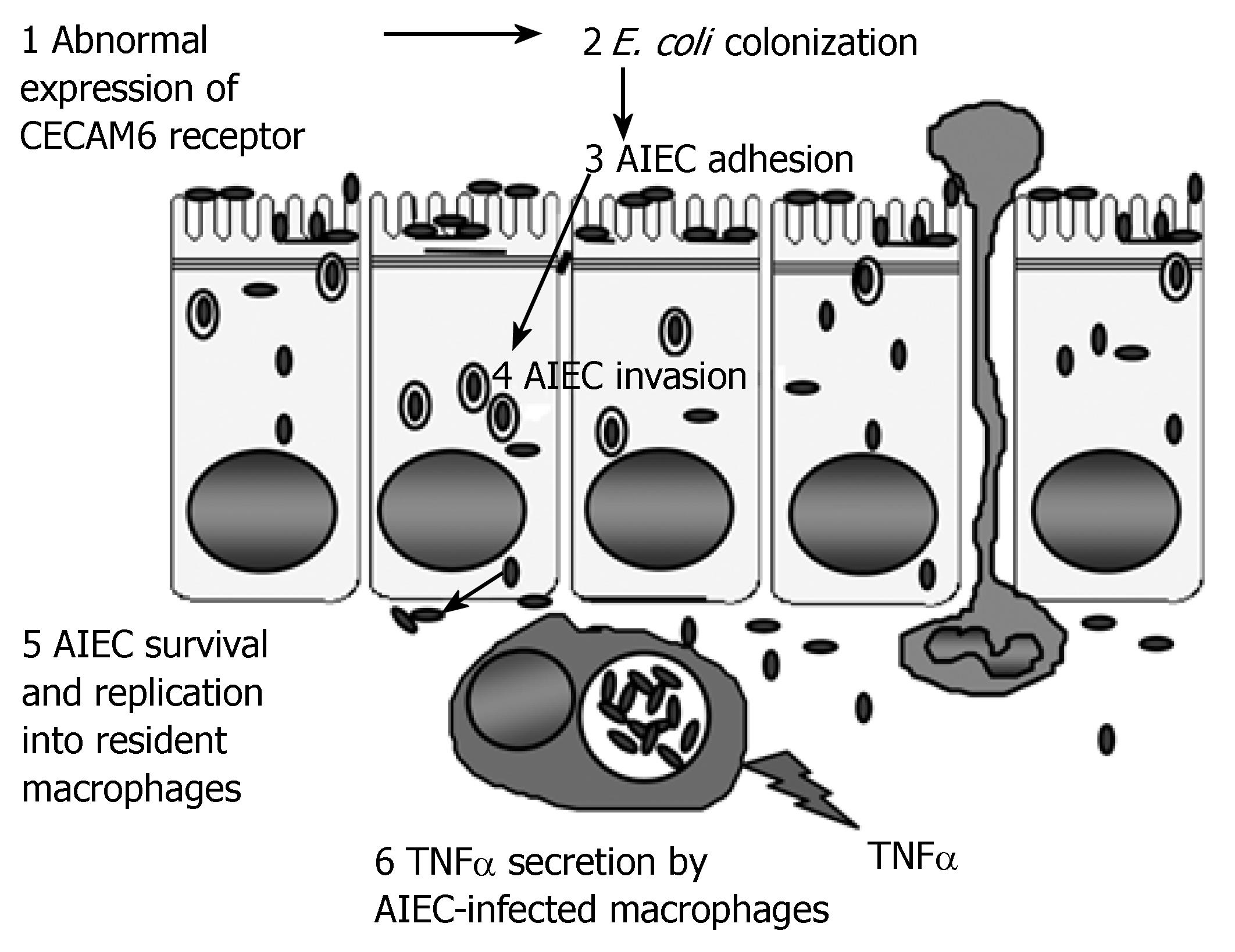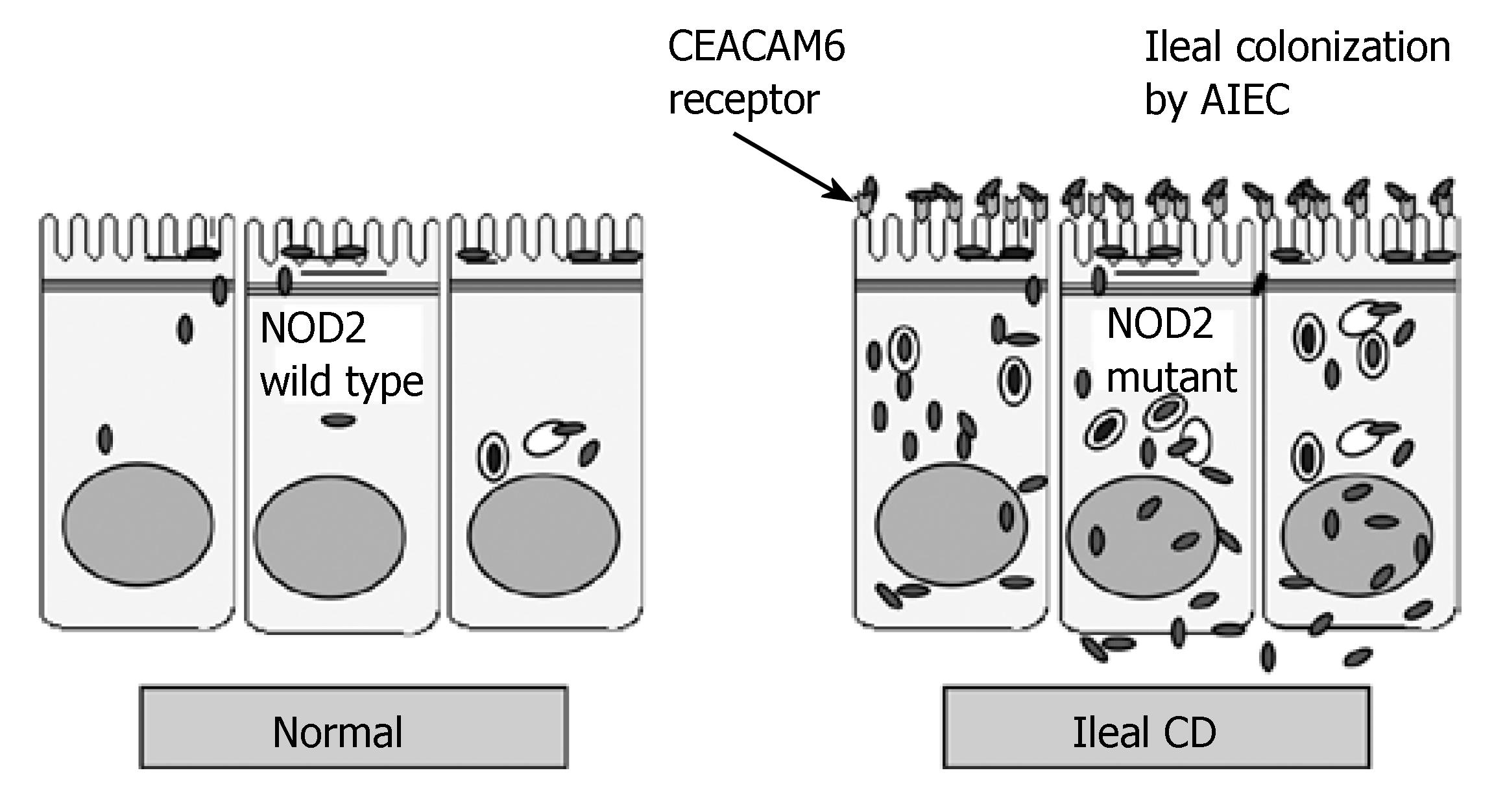Copyright
©2007 Baishideng Publishing Group Inc.
World J Gastroenterol. Nov 14, 2007; 13(42): 5571-5576
Published online Nov 14, 2007. doi: 10.3748/wjg.v13.i42.5571
Published online Nov 14, 2007. doi: 10.3748/wjg.v13.i42.5571
Figure 1 Sequential steps of the mechanisms of disease induced by AIEC bacteria: (1) abnormal expression of CEACAM6 in ileal mucosa of CD, inducing (2) AIEC colonization, (3) adhesion and (4) invasion, which allow the bacteria to cross the mucosal barrier.
AIEC bacteria can (5) survive and replicate within infected macrophages in the lamina propria, and (6) induce TNF-α secretion.
Figure 2 The infection cycle of AIEC may depend upon the ability of these pathogenic bacteria to colonize the gastrointestinal tract of genetically predisposed patients.
Patients at high risk for developing severe ileal CD are those who overexpress CEACAM6 in the ileal mucosa, which allows AIEC colonization, and express the NOD2 3020insC mutant which has an impaired function as a defensive factor against intracellular bacteria in intestinal epithelial cells.
- Citation: Barnich N, Darfeuille-Michaud A. Role of bacteria in the etiopathogenesis of inflammatory bowel disease. World J Gastroenterol 2007; 13(42): 5571-5576
- URL: https://www.wjgnet.com/1007-9327/full/v13/i42/5571.htm
- DOI: https://dx.doi.org/10.3748/wjg.v13.i42.5571










